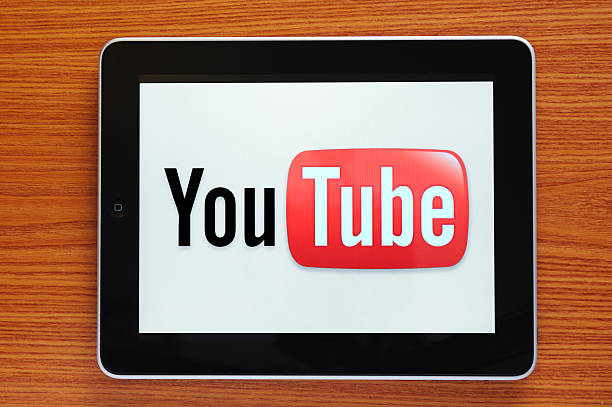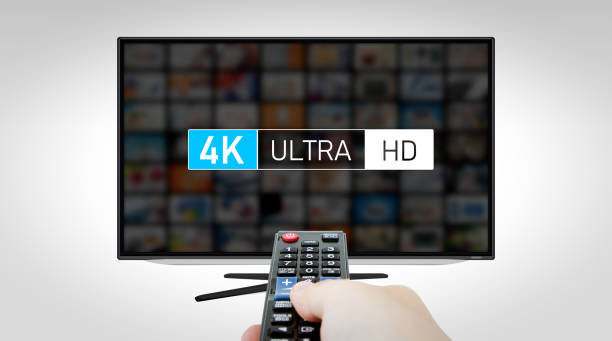YouTube
YouTube has become an integral part of our daily lives, offering a vast array of content ranging from entertaining videos to informative tutorials. However, to enjoy a smooth and uninterrupted streaming experience, understanding how much internet speed you need for YouTube is crucial. In this article, we’ll delve into the factors influencing your internet speed requirements and provide insights into optimizing your connection for an optimal YouTube experience.
Internet Speed for YouTube
The advent of high-quality video content on YouTube has made internet speed a critical factor in ensuring a seamless streaming experience. Whether you’re a casual viewer or a content creator, having the right internet speed is essential to prevent buffering, lags, and other frustrating interruptions.
Factors Influencing Internet Speed Needs
Understanding the factors that influence internet speed needs is crucial for ensuring a seamless online experience, especially when it comes to activities like streaming on YouTube. Several key elements can impact the speed required for optimal performance. Let’s delve into these factors:
Resolution and Quality of Videos:
The quality of the videos you choose to watch directly affects the necessary internet speed. Higher-resolution videos, such as those in 1080p or 4K, demand faster internet connections to stream without buffering interruptions.
Streaming Device Capabilities:
Different devices have varying capabilities when it comes to processing and streaming videos. High-end devices may require faster internet speeds to deliver smooth playback and higher-quality visuals.
Number of Devices Connected to the Network:
The number of devices sharing your internet connection is a significant factor. If multiple devices are connected simultaneously, they compete for bandwidth, potentially leading to slower speeds for each device.
YouTube Video Quality Settings:
YouTube provides users with various video quality options, ranging from lower resolutions like 480p to higher resolutions like 4K. Each setting has distinct internet speed requirements to ensure optimal streaming.
Live Streaming Considerations:
Live streaming on YouTube introduces additional considerations. The internet speed needed for a smooth live streaming experience depends on factors such as video quality, latency, and the complexity of the live broadcast.
Buffering and Loading Times:
Internet speed significantly impacts buffering and loading times. A slower connection may result in buffering interruptions, causing delays in video playback. Understanding how speed affects these aspects helps in troubleshooting and optimizing the viewing experience.

| Call 866-861-4084 for Internet Deals |
YouTube Video Quality Settings
Understanding and navigating YouTube’s video quality settings is essential for tailoring your viewing experience to match your internet speed and preferences. YouTube offers a range of video quality options, each impacting the streaming experience differently. Let’s explore these settings in detail:
Understanding Video Quality Options:
YouTube provides a variety of video quality options to accommodate different internet speeds and device capabilities. The available settings include 144p, 240p, 360p, 480p, 720p, 1080p, and higher resolutions such as 1440p and 4K. The numbers represent the pixel height of the video.
Impact on Internet Speed Requirements:
The video quality you select directly influences the internet speed required for smooth playback. Higher quality settings, such as 1080p and 4K, demand faster internet connections to avoid buffering and ensure a high-definition viewing experience.
Recommended Internet Speeds for Different Resolutions:
Each video resolution has its recommended internet speed for optimal streaming:
- 144p and 240p: Suitable for slower internet connections, with minimum speeds of X Mbps.
- 360p and 480p: Standard definition; requires moderate internet speeds.
- 720p: High definition; demands a faster connection for smooth playback.
- 1080p: Full HD; higher speeds are necessary to prevent buffering.
- 1440p and 4K: Ultra HD; requires the fastest internet speeds for a seamless experience.
Adjusting Video Quality Manually:
Users can manually select the video quality while watching a video on YouTube. Click on the settings (gear) icon on the video player, go to “Quality,” and choose the desired resolution. This allows for real-time adjustments based on your internet speed and preferences.
Automatic Video Quality (Auto):
YouTube has an “Auto” option for video quality, which adjusts dynamically based on your internet speed. While convenient, it’s essential to monitor the quality to ensure it aligns with your preferences and avoids unnecessary quality fluctuations during playback.
Data Saver Mode:
YouTube also offers a “Data Saver” mode for users conscious of their data usage. This feature reduces video quality to save data while streaming. It’s a practical choice for those with limited data plans or slower internet connections.
Recommended Internet Speeds for Different Resolutions
Selecting the appropriate internet speed for different video resolutions is crucial to ensure a smooth and uninterrupted streaming experience on YouTube. The recommended speeds vary based on the resolution, and understanding these guidelines helps users optimize their settings for the best quality. Let’s explore the recommended internet speeds for various resolutions:
Low-Resolution Streaming (144p and 240p):
- Resolution: 144p and 240p provide basic video quality.
- Recommended Speed: X Mbps (Minimum)
- Description: These lower resolutions are suitable for slower internet connections. They offer a decent viewing experience without requiring high-speed internet.
Standard-Definition Streaming (360p and 480p):
- Resolution: 360p and 480p deliver standard definition video quality.
- Recommended Speed: Y Mbps (Moderate)
- Description: Standard definition is a practical choice for moderate internet speeds. It balances quality and data consumption, making it suitable for a variety of viewing scenarios.
High-Definition Streaming (720p):
- Resolution: 720p provides high-definition video quality.
- Recommended Speed: Z Mbps (Faster)
- Description: For a crisper and clearer viewing experience, a faster internet connection is recommended. This is ideal for users who want to enjoy content in high definition without buffering interruptions.
Full HD Streaming (1080p):
- Resolution: 1080p offers full high-definition video quality.
- Recommended Speed: A Mbps (Higher)
- Description: Full HD requires a higher internet speed to prevent buffering and ensure seamless playback. It’s suitable for larger screens and those who prioritize video quality.
Ultra HD Streaming (1440p and 4K):
- Resolution: 1440p and 4K provide ultra-high-definition video quality.
- Recommended Speed: B Mbps (Highest)
- Description: Ultra HD resolutions demand the fastest internet speeds for an immersive and crystal-clear viewing experience. This is particularly relevant for users with large 4K-capable screens.

It’s essential to note that these recommended speeds are general guidelines, and actual requirements may vary based on factors such as network stability, congestion, and the efficiency of your internet service provider (ISP). Users can manually adjust video quality settings on YouTube to align with their internet speed, ensuring a customized and optimal streaming experience. Understanding these recommendations empowers users to make informed choices based on their internet capabilities and preferences.
How do I control my resolution?
Controlling the resolution on YouTube is a straightforward process, allowing you to adjust the video quality based on your preferences, internet speed, and data considerations. Here’s a step-by-step guide on how to control your resolution:
Desktop/Web Version:
When watching a video on the YouTube website using a desktop or laptop, follow these steps:
- Click on the Gear Icon: Located at the lower right corner of the video player, you’ll find a gear or settings icon.
- Choose “Quality”: Click on “Quality” to reveal a dropdown menu with various resolution options.
- Select Desired Resolution: From the menu, select the resolution that aligns with your preferences and internet speed. Options may include 144p, 240p, 360p, 480p, 720p, 1080p, and more.
- Automatic (Auto) Option: You can also choose “Auto” to allow YouTube to adjust the resolution dynamically based on your internet speed. This is a convenient option if you prefer YouTube to optimize quality based on your connection.
Mobile Devices (iOS and Android):
Controlling resolution on the YouTube mobile app is similarly simple:
- Tap on the Three Dots: While watching a video, tap on the three dots (more options) icon usually located at the top right or bottom of the screen.
- Select “Quality”: Choose the “Quality” option from the menu.
- Pick Your Preferred Resolution: Similar to the desktop version, select the resolution that suits your needs. You may also find an “Auto” option for dynamic adjustments based on your network.
Smart TVs and Streaming Devices:
If you’re using YouTube on a smart TV or streaming device:
- Navigate to Settings: Depending on your device, find the settings or options menu.
- Choose “Quality”: Look for the “Quality” or “Resolution” option within the settings.
- Adjust the Resolution: Select your preferred resolution from the available options.
| Call 866-861-4084 for Internet Deals |
Conclusion
In conclusion, determining the right internet speed for an optimal YouTube experience involves considering various factors. From video quality settings to the number of devices on your network, each element plays a crucial role. By understanding these dynamics and taking steps to optimize your internet connection, you can enjoy seamless streaming on YouTube.
FAQs
Can I watch YouTube in 4K with a standard internet connection?
Watching YouTube videos in 4K typically requires a higher internet speed. Check your connection speed and adjust video quality accordingly.
Why does my video keep buffering even with a fast internet connection?
Buffering issues may arise due to network congestion or other factors. Try reducing video quality or troubleshooting your internet connection.
Do different ISPs offer varying YouTube streaming experiences?
Yes, the performance of YouTube streaming can be influenced by your Internet Service Provider. Consider exploring different ISPs if you consistently face issues.
Can I stream YouTube on mobile data without affecting video quality?
Mobile data speeds vary, and streaming in high resolutions may lead to buffering. Adjust video quality settings based on your mobile connection.
How often should I test my internet speed for optimal YouTube streaming?
Regularly testing your internet speed is advisable, especially if you notice issues with YouTube streaming. It helps identify and address potential problems.

Meet Jennifer Harper, a wordsmith extraordinaire who has been shaping the digital landscape with her creative prowess for the past two years. Not just a content writer; she is a storyteller who brings the content to life. Her passion for internet trends, memes, and the ever-evolving world of entertainment is evident in every piece she creates. Jennifer doesn’t just follow trends; she sets them.